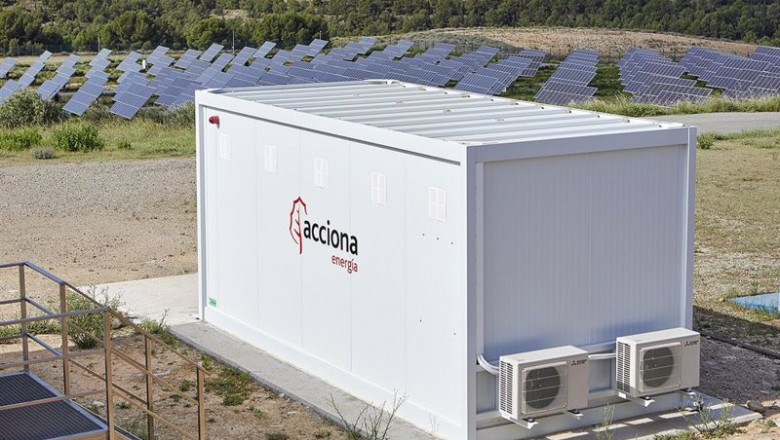Policy
An overview of important new Spanish regulations for grid access that boost battery competitiveness
Spain’s Official State Gazette (BOE) today publishes the Royal Decree amending RD 413/2014, which updates the order of grid-access priority for electricity to boost the penetration of storage and flexible technologies.

By
Pilar Sanchez Molina
Oct 17, 2025
Finance
ndustry
Policy

The second-life batteries that Acciona Energía launched with BeePlanet in Navarra. | Image: Acciona
Spain’s Official State Gazette yesterday published Royal Decree (RD) 917/2025, which updates RD 413/2014 and has significant implications for the nation’s energy storage industry.
The legislation recognizes storage’s role in managing and stabilizing the electricity system, in line with European Union regulation (EU) 2019/943, which defines storage as a technology that provides flexibility and allows for greater integration of renewable energy.
While RD 917/2025 defines storage as an operational category of the Spanish electricity system, however, it does not assign remuneration status independent of clean energy sites so standalone storage facilities will continue to depend on the energy markets or procurement auction subsidies such as those granted by the capacity mechanism.
End of “non-manageable generation” and new dispatch priority
The updated legislation, some of which will come into force on Nov. 16, 2025, removes the concept of non-manageable generation and expressly incorporates storage. It also specifies the order of priority for the downward redispatch of electricity not traded on energy markets.
Under the new rules, renewable energy has first priority, including electricity from plants with storage, provided the storage capacity is lower than the generation capacity. High-efficiency cogeneration, including with storage, has second priority, followed by all other technologies. Within that framework, the system operator (OS/REE) may prioritize sites that contribute most to the security and quality of supply, under RD 917/2025.
Adjustments to regulated profitability
The decree or legislation also takes account of Spain’s low electricity prices and its effect on clean energy plant operators.
Currently, around 62,000 sites operating under the “ReCoRe” regime have their revenue reduced if they produce less than a minimum number of “equivalent operating hours”. That minimum figure is calculated according to the volume of electricity sold versus nameplate power generation capacity. Curtailed energy does not count towards electricity sold and neither does energy supplied during zero-price hours. RD 917/2025 specifies curtailment will no longer reduce equivalent operating hours and neither will zero-price-hour supply of electricity provided plants are generating for at least six hours at zero prices.
Expanded technical and telemetry obligations
The decree will also, however, extend the requirements for renewables generation sites to be assigned to grid control centers and stipulates storage facilities must send real-time telemetry to OS Red Eléctrica de España (REE) and will receive operating instructions. The telemetry requirement will apply to storage sites of at least 5 MW on the mainland and of at least 500 kW elsewhere and will come into effect on June 1. Storage facilities will also have to connect to a grid generation and demand control center. Renewables-plus-storage projects will have to supply disaggregated telemetry relating to generation and storage separately.
Grid-connected demand facilities must also send telemetry to REE under the new rules.
Cogeneration sites will be able to make a quarterly choice about whether to sell net electricity generation on the market or use it for self-consumption.
Integration of storage into the renewable remuneration framework
The legislation aims to integrate storage into clean energy generation’s regulatory framework, avoid penalizing generators who install batteries, and recognize the role of storage as a key technology for a flexible, stable electricity system.
Articles 11 and 21 of RD 413/2014 have been amended to ensure subsidized renewables sites with storage will no longer lose income. These “type 3 hybridization” sites which feature no self-consumption – will receive full income for the electricity generated even if it has been stored. The updated articles also state that, from Jan. 1 2026, energy generated in plant busbars in type 3 sites will be considered when calculating equivalent operating hours.
Redispatch and flexibility
In terms of redispatch priority, type 3 hybrid sites will have the same status as pure-renewables generation facilities and the system-flexibility and stability caveat open to the OS is likely to give renewables-plus-storage sites an advantage.
From pv magazine España
pv-magazine.com |






